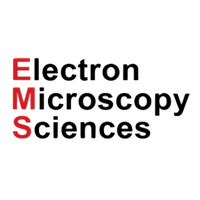
- Collections
Unimount kit (DG)
Cold mounting or embedding is when a resin is mixed with a hardener (or accelerator) to provide the mounting compound, and then the polymerization process take place to form the block. In some cases, this process gives-off heat. However this heat generation can be controlled by the use of ice or cool air blow setting. Cold mounting compounds are preferred for specimens that are sensitive to the heat or pressure, which applies during the hot mounting process. There are three types of cold mounting:
1. Epoxy Systems - Epoxies have the lowest shrinkage of all cold mounting resins. The curing time is relatively long, but the adhesion to most materials is excellent. They are also used for vacuum impregnation. The hardened epoxy is duroplastic and not affected by moderate heat or chemicals.
2. Acrylic System - Acrylics are easy to use resins with short curing times and negligible shrinkage. They consist of self-polymerizing components that harden with the addition of catalyst. Hardened acrylic is thermoplastic and resistant to most chemicals.
3. Polyester Systems - Polyester belongs to the catalyzed system, like acrylics. Curing times are relatively short and the hardened specimen is duroplastic.
| Resin | Colour | Curing time | Shrinkage From 1-4 (Best: 1) | Hardness | Application |
|---|---|---|---|---|---|
| Unimount | Clear, Transparent Refractive index: ND = 1.573 |
8 hours | 1 | 84 Shore D | Vacuum impregnation Porous samples Mineralogical samples |
| Mixing Ratio | Mixing Ratio Volume | Mixing time | Potlife | Can be coloured with Epodye | Can be coloured with AcryDye | Peak Temp |
|---|---|---|---|---|---|---|
| Resin: 7 parts Curing Agent: 1 part |
Resin: 26 parts Curing Agent:5 parts |
3 min |
60 min | Yes | No | 60°C |
Ordering schedule: April, August, November.
We order from this manufacturer at the beginning of these months, for delivery to our warehouse after 4-6 weeks.
| Code | Title | Pack Size | Availability | Price | Updated: 27-04-2024 | |
|---|---|---|---|---|---|---|
| EMS1234 | Unimount kit (DG) | Each | See above | $665.00 AUD | ||
